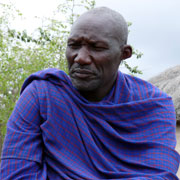Lesira Samburi is a pastoralist from Terrat in Simanjiro. He vividly recalls that during the 1960s and 1970s when he used to herd goats and cattle as a young boy, there were predictable rain patterns. You would know when the rains would start, what month, and when they were expected to subside. However, he remembers seeing changes in the 1980s, with varying weather patterns and less predictability in rainfall patterns. The changes in rain patterns continued up to 2009, where the least amount of rain was recorded and there seemed to be no rain at all. As a result, many cattle died as they are reliant on water resources. There was also very little grass to feed the livestock due to the dry conditions. In addition to this, diseases develop which affected both humans and animals. Therefore, Lesira feels that the changing climate has negatively affected the Masaai as a people and as a community.
Today, you’ll see more Masaai now planting maize as a means of survival with the current changing weather patterns. However, despite this adaptation, the main source of livelihood for the masaai remains livestock production. Livestock is their main source of livelihood, and intimately tied to their culture. Lesira feels that predictable rainfall is needed for their survival.
With poor water resources, the Masaai in Terrat now must dig boreholes to collect water. There is often poor water quality, which has led to outbreaks of typhoid in their communities. Lesira has also noticed a reduction in the use of traditional medicines as less roots and plants are available. Again, this serves to further threaten their culture and lifestyle.

